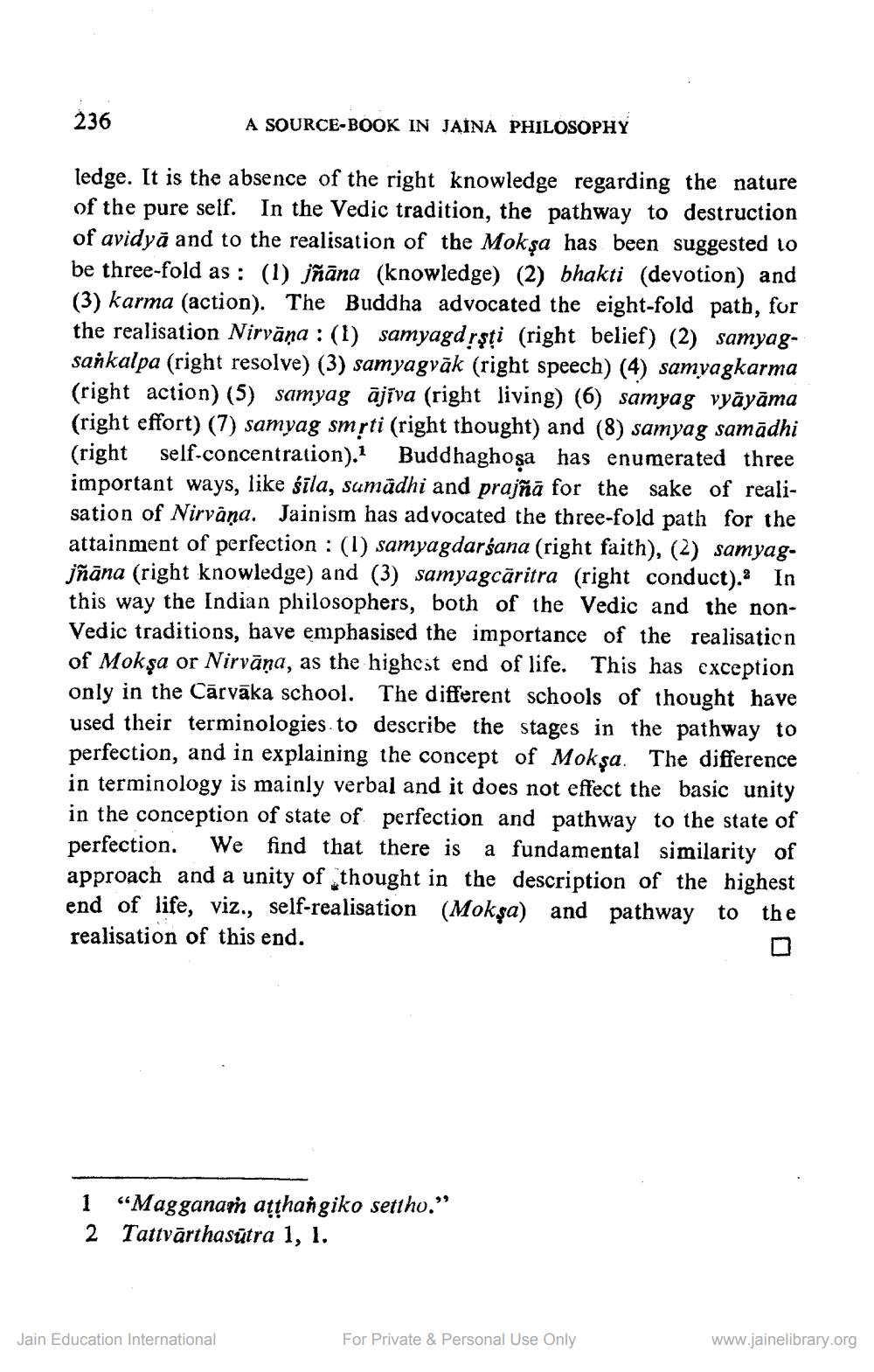________________
236
A SOURCE-BOOK IN JAINA PHILOSOPHY
ledge. It is the absence of the right knowledge regarding the nature of the pure self. In the Vedic tradition, the pathway to destruction of avidyā and to the realisation of the Mokșa has been suggested 10 be three-fold as : (1) jñāna (knowledge) (2) bhakti (devotion) and (3) karma (action). The Buddha advocated the eight-fold path, for the realisation Nirvāṇa : (1) samyagd rşți (right belief) (2) samyagsankalpa (right resolve) (3) samyagvāk (right speech) (4) samyagkarma (right action) (5) samyag äjiva (right living) (6) samyag vyāyāma (right effort) (7) samyag smrti (right thought) and (8) samyag samādhi (right self-concentration). Buddhaghosa has enumerated three important ways, like śīla, samādhi and prajñā for the sake of realisation of Nirvāņa. Jainism has advocated the three-fold path for the attainment of perfection : (1) samyagdarśana (right faith), (2) samyagjñāna (right knowledge) and (3) samyagcăritra (right conduct). In this way the Indian philosophers, both of the Vedic and the nonVedic traditions, have emphasised the importance of the realisation of Moksa or Nirvāna, as the highest end of life. This has cxception only in the Cārvāka school. The different schools of thought have used their terminologies to describe the stages in the pathway to perfection, and in explaining the concept of Mokşa. The difference in terminology is mainly verbal and it does not effect the basic unity in the conception of state of perfection and pathway to the state of perfection. We find that there is a fundamental similarity of approach and a unity of thought in the description of the highest end of life, viz., self-realisation (Mokşa) and pathway to the realisation of this end.
1 “Magganam ashangiko settho.” 2 Tattvārthasūtra 1, 1.
Jain Education International
For Private & Personal Use Only
www.jainelibrary.org




